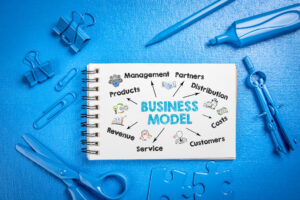
‘No compromise’ business practices, tips for meeting recruitment challenges
By onBusiness Practices
Quality Collision Group CEO and founder Jerod Guerin recently shared in a Forbes commentary article how shops, and businesses in general, can reach a “no compromise” business model, starting with proper repairs.
“Our model is centered around following the recommended OEM repair procedures and using OEM replacement parts, which are manufactured to the same specifications as a vehicle’s original parts,” he wrote. “When working with insurance carriers, we ensure we will not be required to deviate from this standard.”
He noted Apple as another example of the business model because of its control over hardware and software “for a more reliable user experience.”
“Especially in industries where safety is paramount, letting your consumers know you will accept only the highest standards is a powerful way to connect with your target market,” he wrote.
Guerin, who is also a Forbes Business Council member, added that other areas in which the business model can be helpful are investments in equipment and/or facilities, quality of leaders, benefits for employees, business growth, and workplace culture.
“When brands prioritize the customer to a similarly high standard, other aspects of the business can fall into place, and their reputation becomes its own form of marketing,” he wrote.
Five steps Guerin recommends businesses take to follow the “no compromise” model are:
-
- “Selecting the right partners: Get serious about vetting out mediocrity and only selecting the best of the best.
- “Leading by example: It’s not enough to espouse the virtues of a no-compromise model — employees must see leaders living the company’s values.
- “Reinforcing the brand: Find ways to emphasize your core values and brand framework. For instance, we hold an annual leadership conference branded “DRIVE,” which stands for dedication, results, integrity, vision and excellence.
- “Rewarding high performers: This is not purely a matter of incentivizing performance but recognizing people’s contributions. For example, we are awarding the top 10% of our performers with a vacation in 2025.
- “Treating all staff well: Ensure everyone on your team receives the same level of respect. For us, that means treating our technicians with the respect that front-office staff are afforded automatically. There should be no exceptions in this model.”
During a Society of Collision Repair Specialists (SCRS) Repairer Driven Education (RDE) session at the 2023 SEMA Show, Opus IVS ADAS Services Vice President Frank Terlep outlined a similar no-holds-barred philosophy in running a business.
His advice: be deliberate and persistent and if it isn’t broken, break it. That’s the “formula for success” for collision repair small businesses, he said.
“Fail forward fast — what does that mean? Get out and try something new, make a mistake,” Terlep said. “Move fast and break things… If you’re not out there trying new stuff, how do you know if it’s going to work or not? You don’t know.”
It’s important to have mission and vision statements that change over time with the ideals and goals of the business, he said.
According to Terlp, questions repair facility leaders can ask themselves could include:
-
- How do we improve what we’re doing today?
- What are our existing processes?
- How are we performing, not only against our goals but to a peer group?
Other parts of Terlep’s “formula for success” include:
-
- Strategy and planning;
- People;
- Processes;
- Scorekeeping;
- Innovation;
- Technology; and
- Leadership — the “formula amplifier” and one of the most important things in running a business.
For certain organizations, Ennis & Co. Group shared last year in its research, “Skills Evolution Roadmap 2025: The Cost of Your Skills Gap,” that recruiting and retaining the required talent to deliver commercial goals has become so challenging that it’s now one of the key drivers of business strategy.
One important takeaway is the three stages of employees’ career journeys that E&Co. recommends businesses keep in mind:
-
- Career exploration – Businesses need to “win the hearts and minds” of younger people who typically pay close attention to the mission and values of an organization beyond what they would be paid;
- Established career – These workers form a large portion of the workforce, are fundamental to the operation of businesses, and can choose whether to stay at one job long-term or look elsewhere. “This is the key battleground for retaining and recruiting staff;” and
- Career choice – More mature workers who may have a choice whether to work or not. They can be retained and attracted with a flexible approach to working hours, pay packages, healthcare, and enhanced pensions.
E&Co. offers more information on skills gap issues and solutions on its website and a skills gap cost calculator.
Images
Featured images: tumsasedgars/iStock
More information
Planning for the future: Tips on financial, risk mitigation & new hire planning
